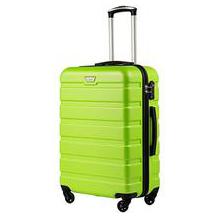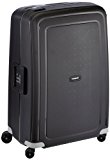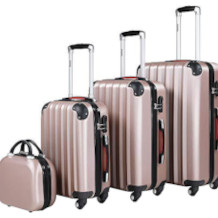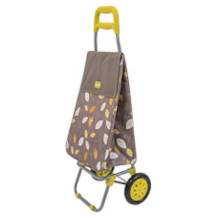Backpack purchasing advice: how to choose the right product
- What You Need to Know
- Backpacks come in countless designs for a wide variety of uses. The most common models include day, school and trekking backpacks.
- A good backpack has a low weight and is robust and stable at the same time.
- With a high-quality carrying system that is optimally adapted to the body, you will ideally hardly feel the backpack on your back.
- A back made of light, breathable material such as mesh fabric ensures that the backpack wearer sweats less under the weight.
- When packing the backpack, make sure that the centre of gravity of the backpack is always in the middle of your back.
Versatile companions for on the go
Most people rarely leave home without some kind of utensil, be it keys, a smartphone or materials for school, work or university. All the books, bottles, headphones and other everyday companions want to go on the road as comfortably as possible without making their owners’ trouser and jacket pockets bulge unsightly. Backpacks are a good solution for this. Unlike a bag, a backpack allows you to distribute the weight evenly over both shoulders, which is not only more comfortable but also better for your posture and back. In addition, a backpack has the advantage that you have both hands free while carrying it. Backpacks are popular companions not only for school, training and work. In the meantime, numerous manufacturers offer special models for various purposes, such as for different sports, hiking or travelling.
You can find some of the most popular and best backpacks in our comparison overview. In the following, we look at different types of backpacks and explain what you should look out for when buying. You will also find practical tips on how to use your backpack and a summary of the results of further backpack tests in our advice section.
The most common types of backpacks
There are countless backpack models on the market, all of which differ in size, shape and features and are therefore suitable for different areas of use. The most common types of backpacks include so-called daypacks, school backpacks and hiking backpacks. We will look at the characteristics of these three types below.
Daypacks: Ideal for everyday use
Daypacks are typically compact models with comparatively few compartments. The capacity is usually between 10 and 25 litres, so the backpack offers space for everyday items such as keys, wallet and the like. Thanks to their compact dimensions and flat designs, daypacks are not bulky in the way in the daily crush on buses and trains and can also be placed comfortably on the lap. Reinforced frames and struts are rarely found here. This means that daypacks have comparatively little dead weight and are not quite as stable as hiking backpacks, for example, which are designed to carry more weight. In addition, most daypacks do not have a breathable back surface.
In general, a daypack is versatile. It is the ideal companion for everyday life and a good alternative to a handbag. Among other things, it is suitable as a backpack for university, for carrying sports or swimming gear, for city trips and short hiking tours. Many manufacturers offer special daypack models with colours and designs that appeal to both male and female buyers, with something for every taste from simple and elegant to distinctly cool and garish and playful designs.
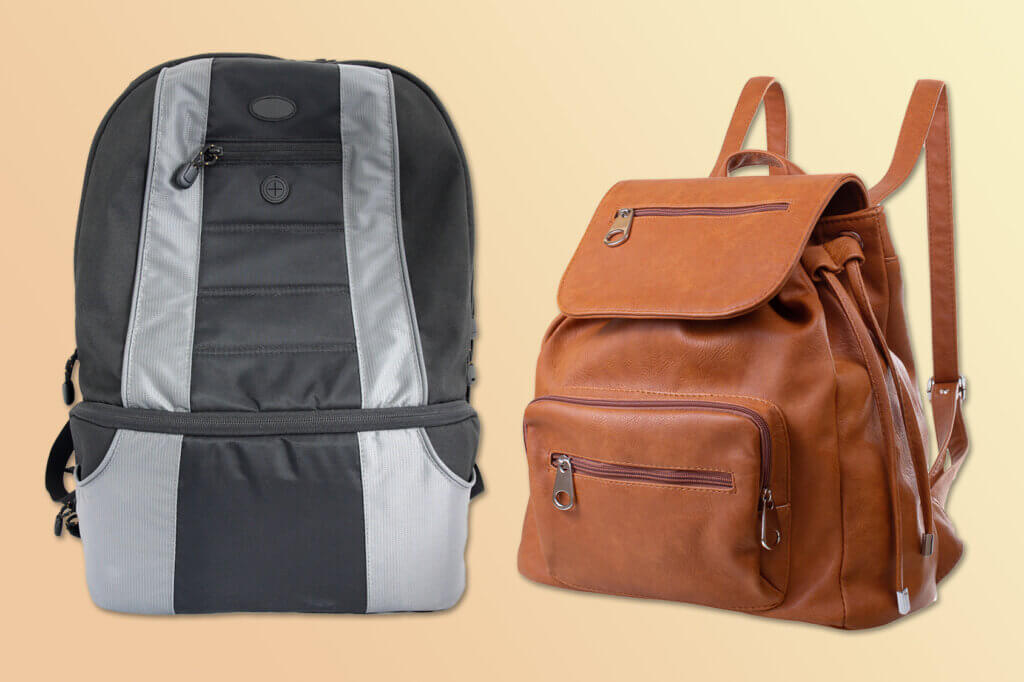
School backpacks: the modern satchel
School backpacks are the modern and “cool” alternative to the classic school satchel. They are especially popular with older students from the fifth grade upwards and are less bulky than satchels. Some – especially larger – daypacks are also suitable as school backpacks, but typically the latter are somewhat larger. Most school backpacks have a capacity of 25 to 30 litres. It is also practical to divide the interior into several compartments so that books and exercise books can be stored in an orderly fashion.
The designs of school backpacks are as varied as those of daypacks: from plain and simple to colourful and playful patterns, there is everything. Many manufacturers also offer school backpacks in designs that are usually more popular with boys and girls. Unlike daypacks, many school backpacks have an ergonomic and back-friendly back. This is especially important for pupils who are still growing. For them, incorrect posture caused by an unergonomic backpack can result in postural and back damage. To make pupils easily visible in poor visibility in road traffic, some school backpacks are equipped with reflectors.

Hiking and trekking backpacks: ideal travel companions
The hiking backpack, often also called a trekking backpack or backpack, is designed for outdoor activities. Accordingly, it is either waterproof or equipped with a suitable rain cover. Trekking backpacks are ideal for longer hikes or camping trips, but they are also popular travel companions. They are significantly larger than the classic daypack, after all they should also offer enough space for luggage. Typical hiking backpacks have a capacity of between 50 and 70 litres. They also have various compartments on the outside, for example for stowing water bottles or loops for attaching climbing equipment.
Trekking backpacks are designed to carry a lot of luggage as comfortably as possible on the back over a longer period of time. Accordingly, an ergonomic, back-friendly carrying system with wide, padded straps is important. The carrying system of good trekking backpacks also includes straps at chest and hip level that relieve the shoulders and provide better support. Ideally, trekking backpacks are very stable and at the same time have a low weight. Common models weigh between 500 and 3,000 grams. To prevent you from sweating too easily under your hiking backpack, manufacturers usually use breathable material on the back of their models. Light mesh fabric, for example, is very popular.
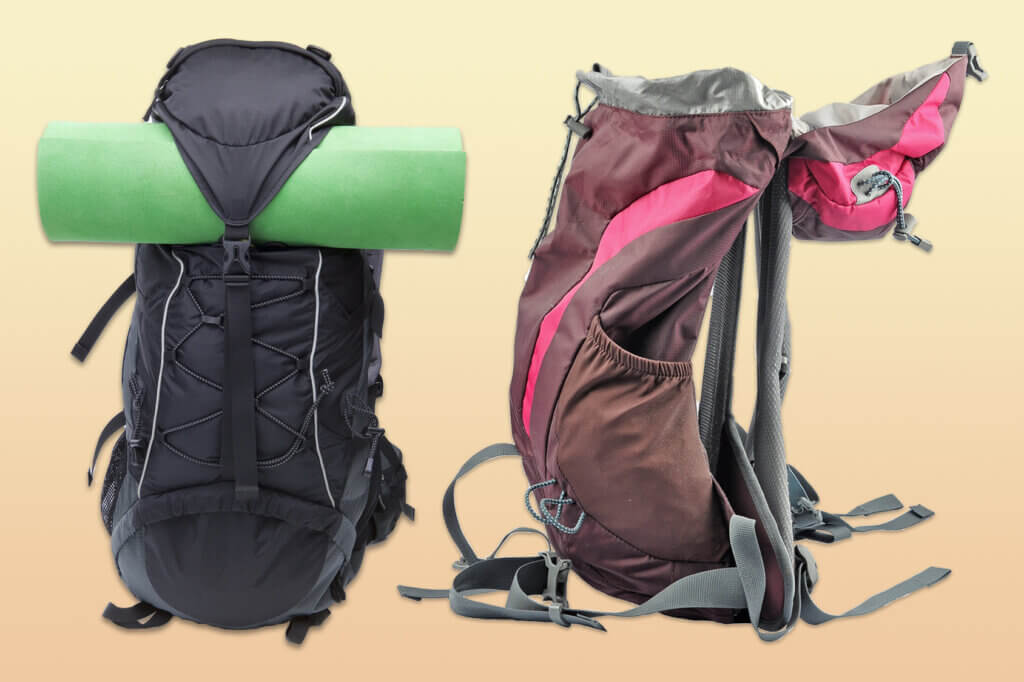
The three most common types of backpack at a glance
The following overview summarises the characteristics of daypacks, school backpacks and hiking backpacks:
| Backpack type | Daypack | School backpack | Hiking backpack |
| Einsatzmöglichkeiten | Versatile | Mainly school | Longer hikes, travelling |
| Possible uses | Kompakt | Mittel | Groß |
| Size | 10 to 25 litres | 25 to 30 litres | 50 to 70 litres |
| Compartments | Few | Several | Many |
| Design | Various | Often with reflectors | Simple and practical |
| Characteristics | Compact, suitable for leisure and everyday use | Ergonomic and easy on the bac | Waterproof, breathable, comfortable |
Important purchase criteria
There are many different backpack models on the market. To give you a little guidance in choosing the right model, we highlight the most important buying criteria you should consider below:
Volume, size and weight
How big the backpack should be and how much space it offers naturally depends on the purpose for which you want to use it. For a compact daypack with which you take your keys, wallet and smartphone to work every day, a volume of 10 litres or less is quite sufficient. On the other hand, the situation is different for excursions, larger hikes or even travelling. As far as the weight of the backpack is concerned, the lighter the better. However, the backpack should also be sturdy enough to carry the required luggage.
What is the maximum weight of the backpack?
Some manufacturers specify a maximum weight for their backpacks, depending on the load capacity of the model. Basically, for the sake of your back, you should not carry more than 25 percent of your body weight on your back.
The following overview summarises some orientation values for the recommended volume and the maximum total weight for different purposes:
| Purpose | Suitable volume | Maximum weight (recommended) |
| Kindergarten | Under 10 l | 5 kg |
| Everyday office use | 12 to 25 l | 10 kg |
| Small bike tour | 15 to 20 l | 7 kg |
| Day trip | 20 to 25 l | 8 kg |
| Weekend trip | 25 to 35 l | 10 kg |
| Multiday hiking tour | 30 to 50 l | 15 kg |
| Backpacking | 50 to 70 l | 18 kg |
| Longer trip | Over 70 l | 20 kg |
The material
Models made of leather, imitation leather or canvas are very popular for daypacks. These materials have an elegant look and are robust, water-repellent and easy to clean. Functional backpacks for trekking or backpacking are mainly made of light but robust plastics such as nylon to keep the weight as low as possible while maintaining high stability. With backpacks for outdoor activities, you should pay particular attention to the fact that the chosen model is water-repellent. In addition, you can protect your backpack in bad weather with a waterproof rain cover, which is conveniently included with some models.
What should I look for in a carrying system?
A good carrying system is an important selection criterion, especially for backpacks that you want to carry on your back with a somewhat heavier weight for a longer period of time (for example, on hikes lasting several days). It not only increases the carrying comfort, but also protects your back and neck. A good carrying system consists of the following components:
- Hip belt to relieve the shoulders
- Padded shoulder straps for stabilisation
- Chest strap to keep the shoulder straps in position
- Load control straps to pull the pack closer to the body
- Well-ventilated, comfortable back panel
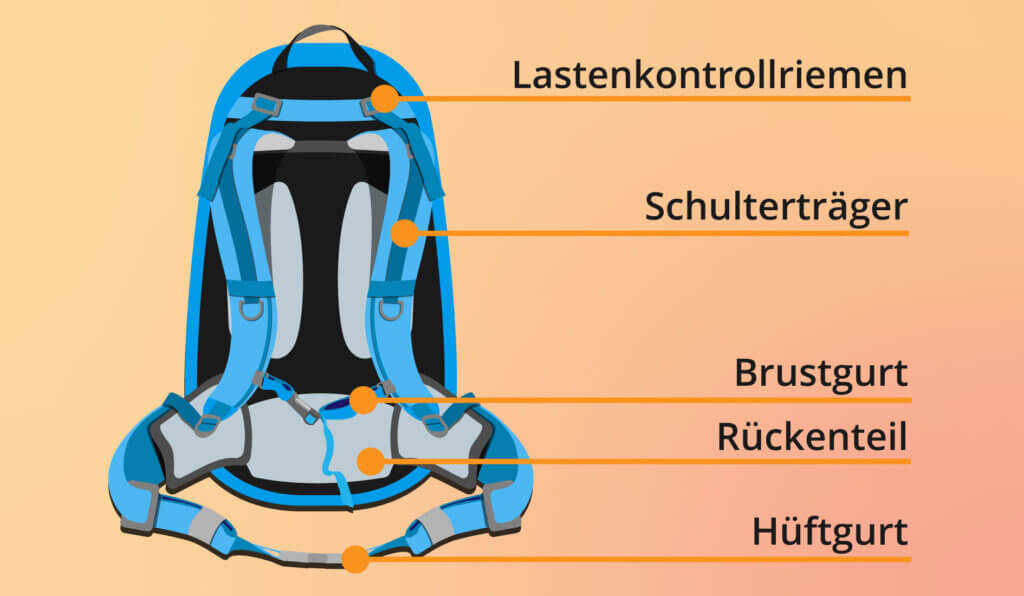
Ideally, all the components of the carrying system are so well matched to each other that you hardly notice the backpack while carrying it.
Mesh back or contact back?
Two carrying systems can be distinguished with regard to the back section. With the mesh back, the back of the rucksack is slightly curved away from the back, with only an elastic mesh resting on the back. This has the advantage that you do not sweat so easily under the backpack. In contrast, the back of a contact back is well padded and fits snugly against the back. Good contact backs are now also breathable and therefore well ventilated. Which type of carrying system you prefer is therefore primarily a matter of taste.
What compartments do I need?
Depending on the model, backpacks are equipped with different numbers of compartments. Simple daypacks are usually limited to one large compartment and a small one on the front. A small inner pocket is practical for storing valuables such as a bunch of keys. If you want to carry your laptop or a tablet in the backpack, you should choose a model with a padded, matching laptop compartment. School and hiking backpacks often have side pockets, usually made of elastic mesh material, for stowing a water bottle. Trekking backpacks have practical additional compartments, such as various pockets for storing small items, an extra compartment for sunglasses or a cooler compartment.
Checking zips
On the one hand, zips are practical, but on the other hand they are a weak point. Since they are used all the time, they are most likely to wear out. The best thing to do before buying is to check whether the zips are sewn properly and can be opened and closed without any problems. It is practical if the backpack compartments each have two zip sliders that move in opposite directions.
How much does a good backpack cost?
Depending on size, material and, of course, brand, backpacks can vary considerably in price. For example, inexpensive no-name daypacks start at around 15 euros, while you can pay up to 500 euros or more for a designer model or a high-quality brand-name trekking backpack. Roughly speaking, backpacks can be divided into the following three price segments:
| Price category | Backpack type | Prices |
| Lower price segment | Daypacks, small touring backpacks | 15 to 80 Euro |
| Medium price segment | More expensive daypacks, outdoor backpacks | 80 to 150 Euro |
| Upper price segment | Large trekking backpacks, brand-name models | From 150 Euro |
Different designs
For many consumers, the design of the backpack also plays a role, especially when choosing a new daypack. The latter are available in designs for men and for women and in various colours, patterns, shapes and different materials. In contrast, business backpacks usually have a plain design. With trekking backpacks, however, you should focus more on functionality than on design.
Other backpack variants
In addition to the three most common types of backpacks (everyday, school and trekking), various manufacturers offer different models that vary in shape, size and features. We briefly introduce some of them below.
Bicycle backpacks

A bike backpack is the right model for anyone who wants to do without a rack or panniers on a bike tour. Bike backpacks are characterised by their special cut, which ensures that they fit the body perfectly. This distributes the weight of the backpack optimally on the back and allows the backpack wearer to keep their balance while riding. Good cycling backpacks also have a breathable back surface and reflectors.
Climbing backpacks

Backpacks designed specifically for climbing are particularly narrow so that the wearer can move as freely as possible. To ensure that the climbing backpack sits stably on the back, its centre of gravity is chosen to be somewhat lower than that of other backpacks. In addition, a good climbing backpack is waterproof as well as lightweight and hard-wearing at the same time. Compared to trekking backpacks, climbing models are much smaller. Common climbing backpacks are available with capacities of 25, 30 or 40 litres.
Kids’ backpacks

There are special backpacks for children, for example for kindergarten or for overnight stays with relatives or friends. Children’s backpacks are mainly characterised by their size, ergonomics and design. They are usually much smaller than backpacks for adults and stand out with bright colours and playful patterns and motifs. Depending on the packing volume and size, a children’s backpack is suitable for different age groups. Backpacks for children up to five years old, for example, have a volume of up to ten litres.
Business backpacks

Business backpacks are special everyday backpacks for going to work. They are characterised by simple, elegant designs and are usually equipped with a sturdy, padded laptop compartment. That is why they are often called laptop or notebook backpacks. The laptop compartment is usually located at the very back of the backpack, close to the back, so that the weight of the laptop is well distributed across the back. In addition, most business backpacks have numerous compartments, for example for writing materials, documents, laptop accessories or business cards.
Trolley backpacks

A good solution for air travel is the so-called trolley backpack. As the name suggests, it is a combination of a backpack and a trolley – a backpack with wheels that is suitable for aeroplane hand luggage. Trolley backpacks offer plenty of space, for example for a laptop, important documents and luggage. Practically, you don’t have to carry the weight on your back, but can simply pull the backpack behind you thanks to the wheels. This also makes backpack trolleys a good option for transporting heavy shopping.
The right way to handle your backpack
If you use your backpack every day, signs of wear and tear cannot be avoided after a certain time. Trekking backpacks in particular are often exposed to wind and weather and can get dirty on hikes over rough terrain. In the following guidebook section, we have collected some useful tips on how to handle your backpack properly – including cleaning and care. In addition, you will learn what you should pay attention to when packing your backpack and how to adjust it properly.
Cleaning and caring for your backpack
Most backpacks are not suitable for cleaning in the washing machine. The friction in the machine damages the plastic coating on the inside of the backpack, making it no longer waterproof. In addition, cleaning in the washing machine can also damage the zips and buckles of the backpack. Instead, you should clean your backpack by hand, preferably after every major tour. To do this, first empty your backpack completely and remove all crumbs, small stones or grains of sand inside – either by shaking it out or using a hoover. Then wipe out the inside of the rucksack with a damp microfibre cloth.
Cleaning the outside of the rucksack
After cleaning the inside of the rucksack, brush off any coarse dirt that has dried on the outside. Alternatively, give your rucksack a quick shower. For heavier soiling, we recommend soaking the rucksack in lukewarm water and gentle detergent in a wash bowl or in the bathtub. Afterwards, the dirt can usually be easily removed with a microfibre cloth or a soft brush. The zips and buckles are best cleaned under water with a toothbrush. Once all dirt has been removed, rinse the backpack thoroughly so that no detergent residue remains.
Dry the rucksack well
To prevent unpleasant odours or mould from developing, it is necessary to dry the backpack properly after washing. The best way to do this is to squeeze out all the foam parts vigorously with your hands and hang the rucksack upside down to dry in a well-ventilated room.
Waterproofing for protection
To keep the outer material of the rucksack in good condition for as long as possible, it is advisable to impregnate the rucksack from time to time. There are special impregnation sprays or liquid impregnation agents that are usually very easy to use. It is best to read the manufacturer’s instructions on how to use the chosen product correctly.
What should I pay attention to when packing my rucksack?
To avoid putting too much strain on your back or your backpack, you should generally limit your packing to the bare essentials. The weight of the backpack should not exceed 25 percent of your body weight. This means that a person weighing 70 kilograms should carry a backpack weighing no more than 17.5 kilograms. For a person weighing 50 kilograms, the backpack should not be heavier than 12.5 kilograms. It is also important that the centre of gravity of the backpack is in the middle of the back. Accordingly, you should pack heavy items such as the laptop or heavy equipment towards the back of the backpack, preferably at shoulder height. Light luggage, on the other hand, goes at the bottom, medium-weight luggage at the top front. You should also make sure that the side pockets are always evenly loaded.
How do I adjust the outdoor backpack correctly?
In addition to proper packing and a good carrying system, you need to adjust your backpack properly so that it does not cause tension and pain when you carry it. To do this, proceed as follows:
- Loosen all existing straps and belts.
- Place the packed rucksack on your back and, bending slightly forward, close the hip belt centrally over the hip bones.
- Tighten the shoulder straps slightly so that their base is between the shoulder blades.
- Tighten the position adjustment straps so that the backpack fits snugly against your back without constricting.
- Loosely tighten and close the chest strap.
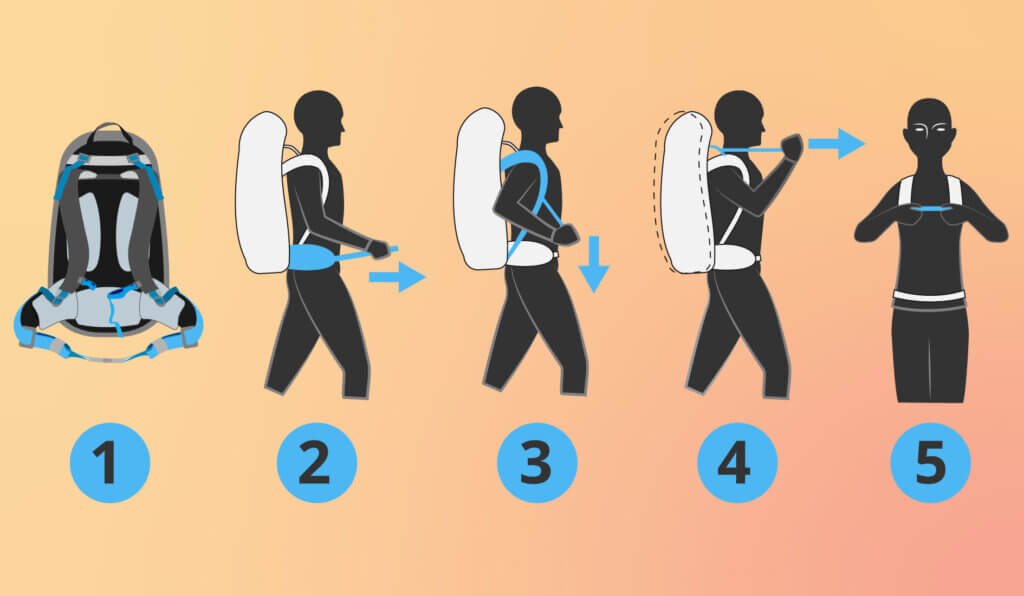
Popular brands and their special features
Numerous manufacturers offer backpacks in various versions for different purposes. For a better overview, we present some of the most popular backpack brands below.
Deuter
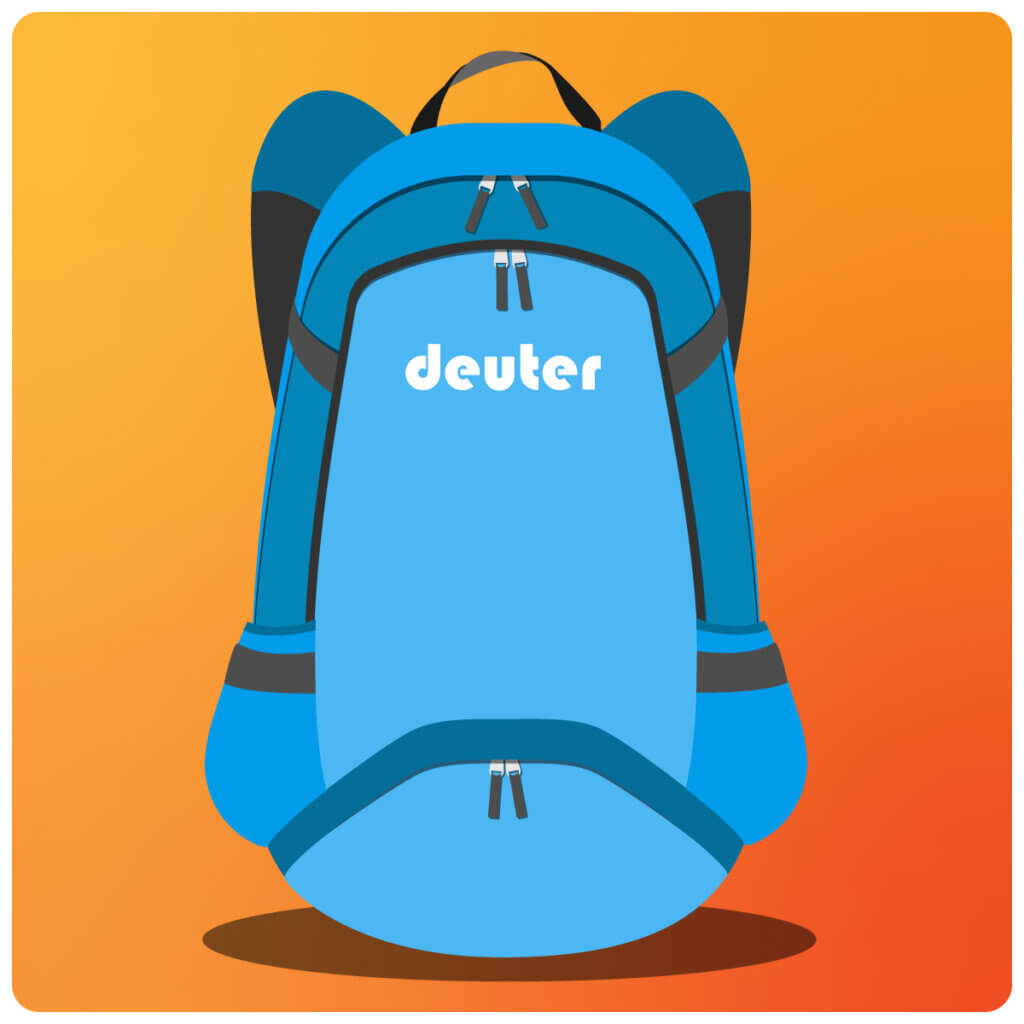
Deuter Sport GmbH is a German manufacturer of backpacks, sleeping bags, bags and accessories for hiking and cycling tours. Deuter’s extensive range of backpacks includes daypacks, hiking, trekking, climbing, children’s, school and bicycle backpacks. The design of the Deuter models is rather simple and appears sporty. The focus is clearly on functionality: the backpacks are characterised above all by their low dead weight, a high-quality, comfortable carrying system and a waterproof outer surface. In terms of price, the Deuter backpacks are on a par with those of the VAUDE brand: you pay between 30 and 300 euros for a Deuter model.
Fjällräven
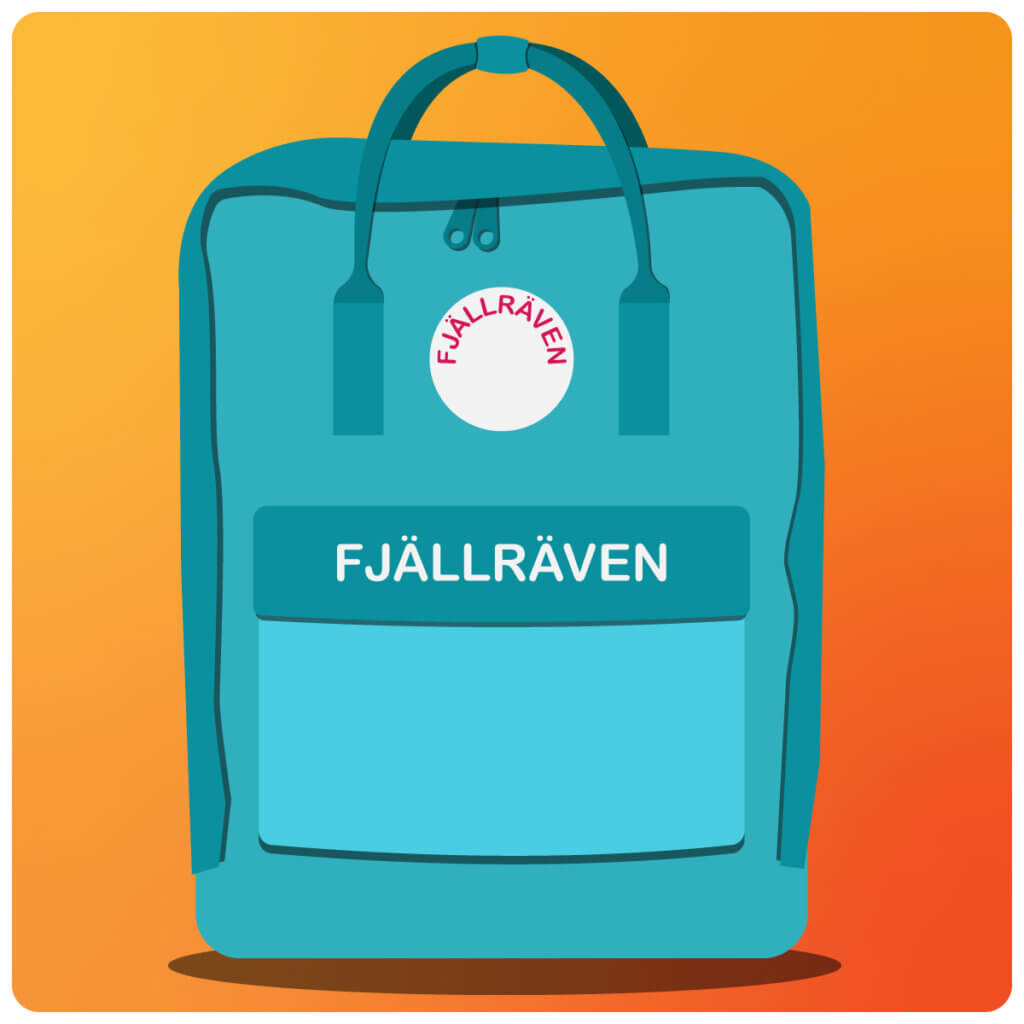
The Swedish company Fjällräven, which means polar fox, specialises in outdoor equipment and functional clothing. Fjällräven focuses on sustainability, both in terms of design as well as materials and production. In addition, the outdoor equipment should be functional, durable and timeless. Fjällräven’s backpack range includes day and hiking backpacks. Particularly well-known and popular is the Fjällräven Kånken model, the Swedish manufacturer’s first backpack, which is characterised by its angular and compact shape and is well received by children and adults alike. However, sustainable production comes at a price: depending on the model, Fjällräven backpacks cost between 40 and 400 euros.
VAUDE
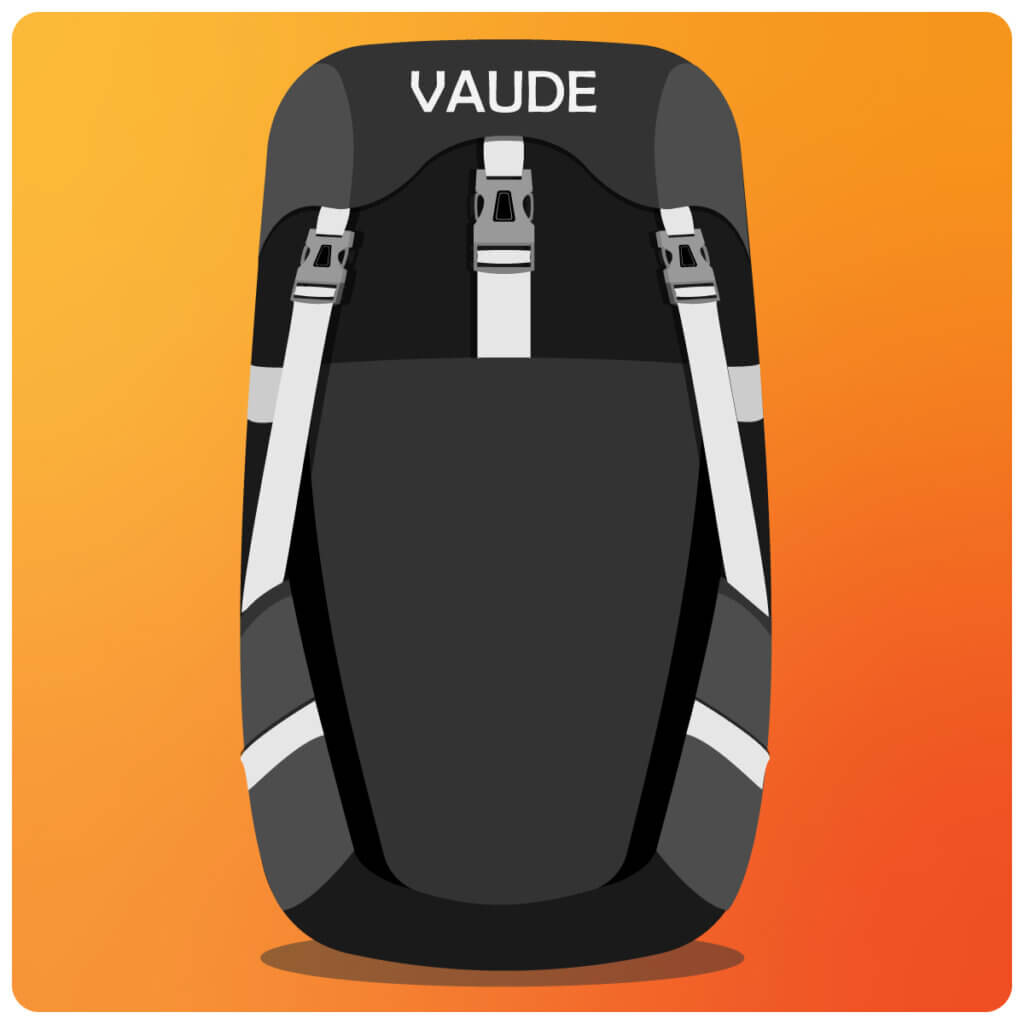
The German family-owned company VAUDE is heading in a similar direction as the Swedish manufacturer Fjällräven and describes itself as a sustainable and innovative outdoor outfitter. The range includes outdoor clothing, shoes, tents, sleeping bags, bags, outdoor accessories and backpacks. The latter are available in various sizes: from small backpacks for everyday use with a volume of less than five litres to large trekking backpacks that hold over 50 litres. In addition to backpacks for various sports such as hiking, skiing and cycling, you will also find school and children’s backpacks in the extensive and versatile VAUDE range. Depending on the model, you will pay around 30 to 300 euros for a VAUDE backpack.
JACK WOLFSKIN
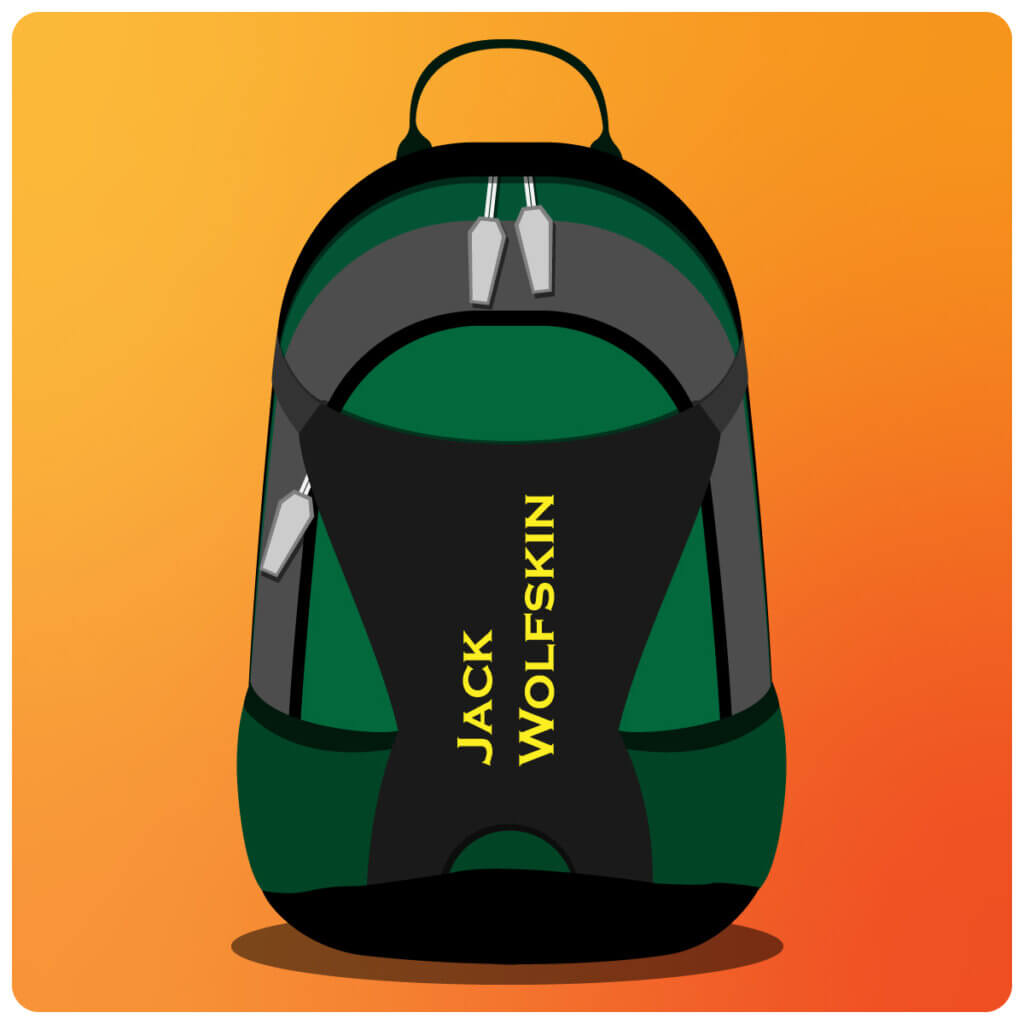
The German company JACK WOLFSKIN was founded in Frankfurt am Main in 1981 and offers functional clothing and outdoor equipment. The manufacturer’s claim to its own products: They should protect, keep warm and dry and at the same time be comfortable and durable. The extensive backpack range includes hiking, trekking, backpacker, day, running, cycling, notebook, alpine, winter sports and children’s backpacks. JACK WOLFSKIN also offers special models for stowing professional photo equipment and rain covers in various sizes. If you decide to buy a JACK WOLFSKIN model, you will have to budget between 30 and 250 euros.
Osprey
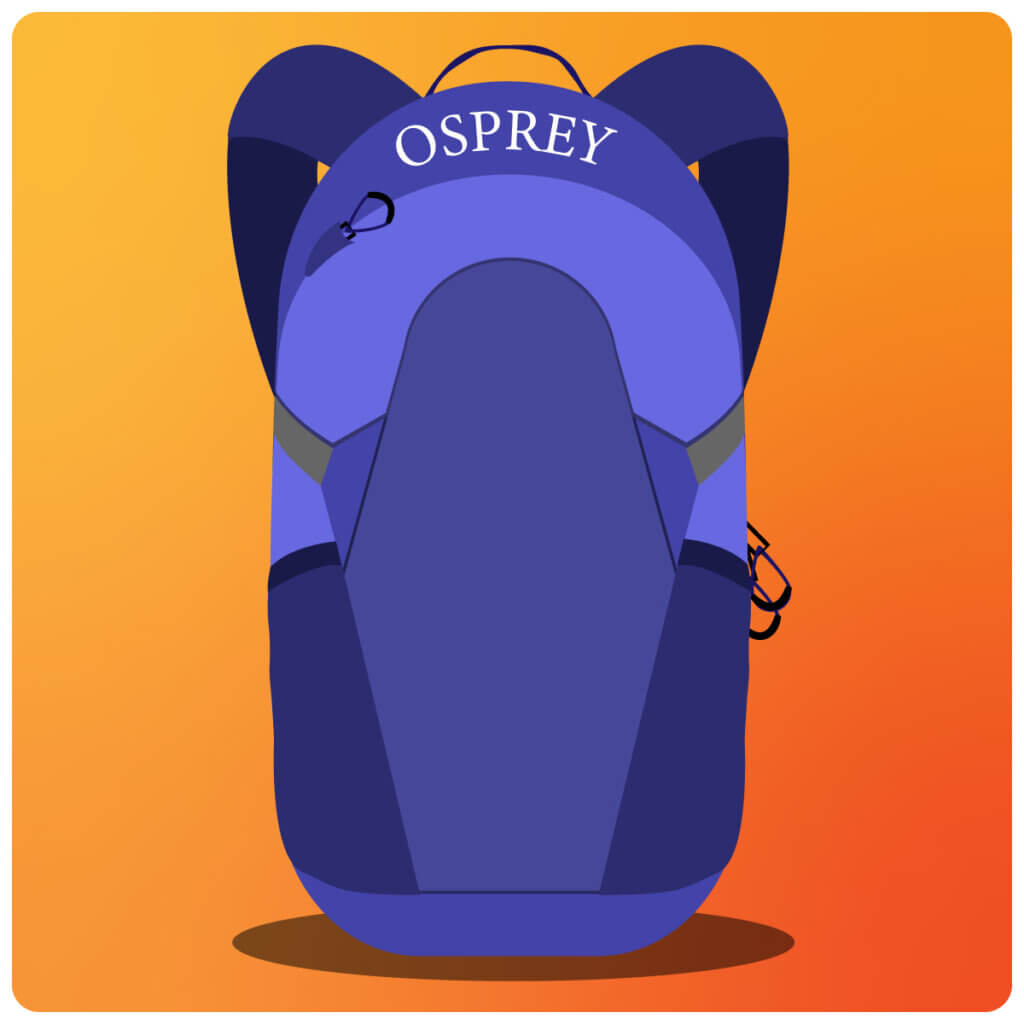
In 1974, the current chief designer Mike Pfotenhauer founded the company Osprey in California. Osprey is one of the first backpack manufacturers to launch models with individually adjustable back lengths and to use ultra-light material and mesh fabric for better ventilation of the back. The company divides its backpack range according to the intended use. At Osprey you will find models for travelling, hiking, running, cycling, mountaineering, diving, winter sports as well as for work, school and leisure. Depending on the model, the price of an Osprey backpack ranges from 35 to 400 euros, with most of the backpacks costing between 80 and 200 euros.
Eastpak
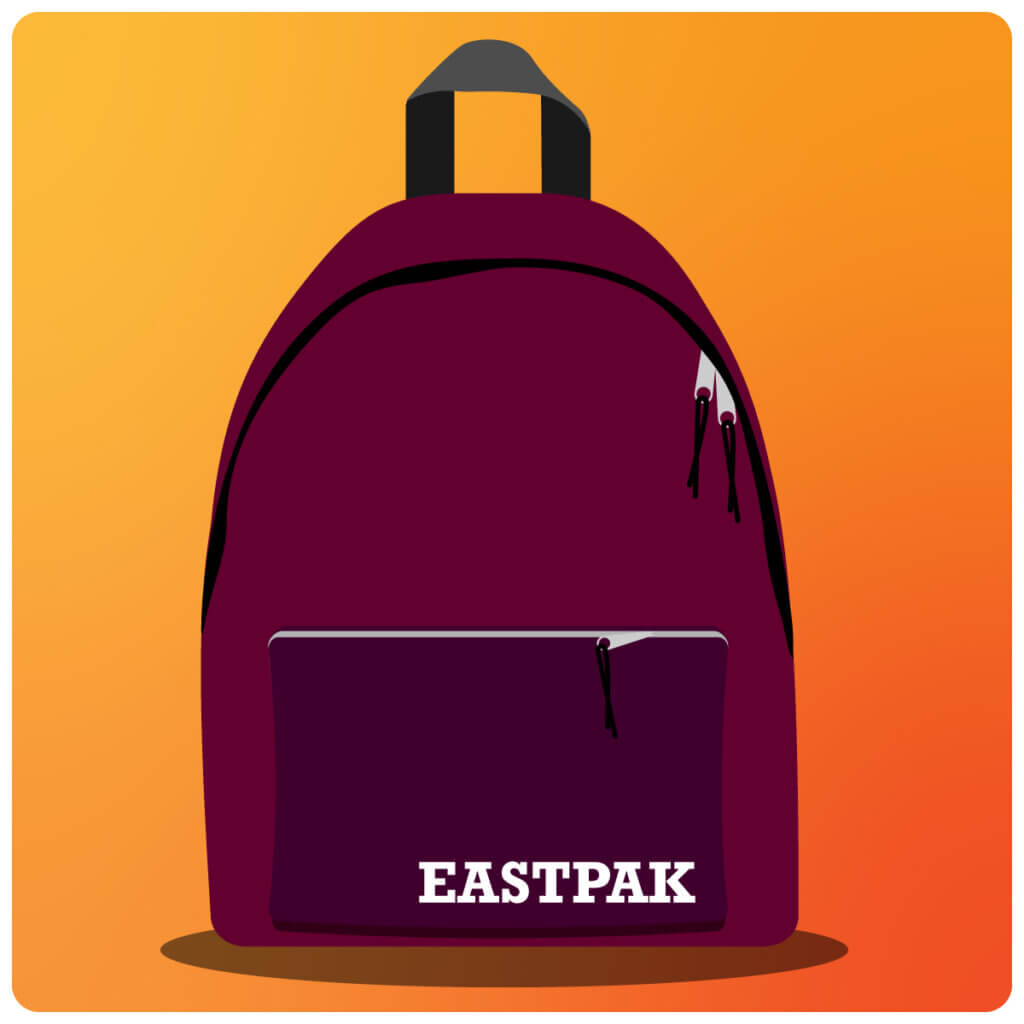
The Eastpak brand had its beginnings in 1952 as Eastern Canvas Products, which produced equipment for the US Army. In 1976, the first typical Eastpak backpack came onto the market. By the 90s at the latest, it was almost impossible to ignore the brand. Eastpak backpacks were especially popular with schoolchildren and students. Today, Eastpak’s range includes backpacks, shoulder bags, luggage and accessories such as pencil cases and wallets. The backpacks are mainly suitable as leisure backpacks as well as for school, work and study. In addition, there are some sports and travel backpacks. The price of an Eastpak backpack is between 50 and 300 euros.
Dakine
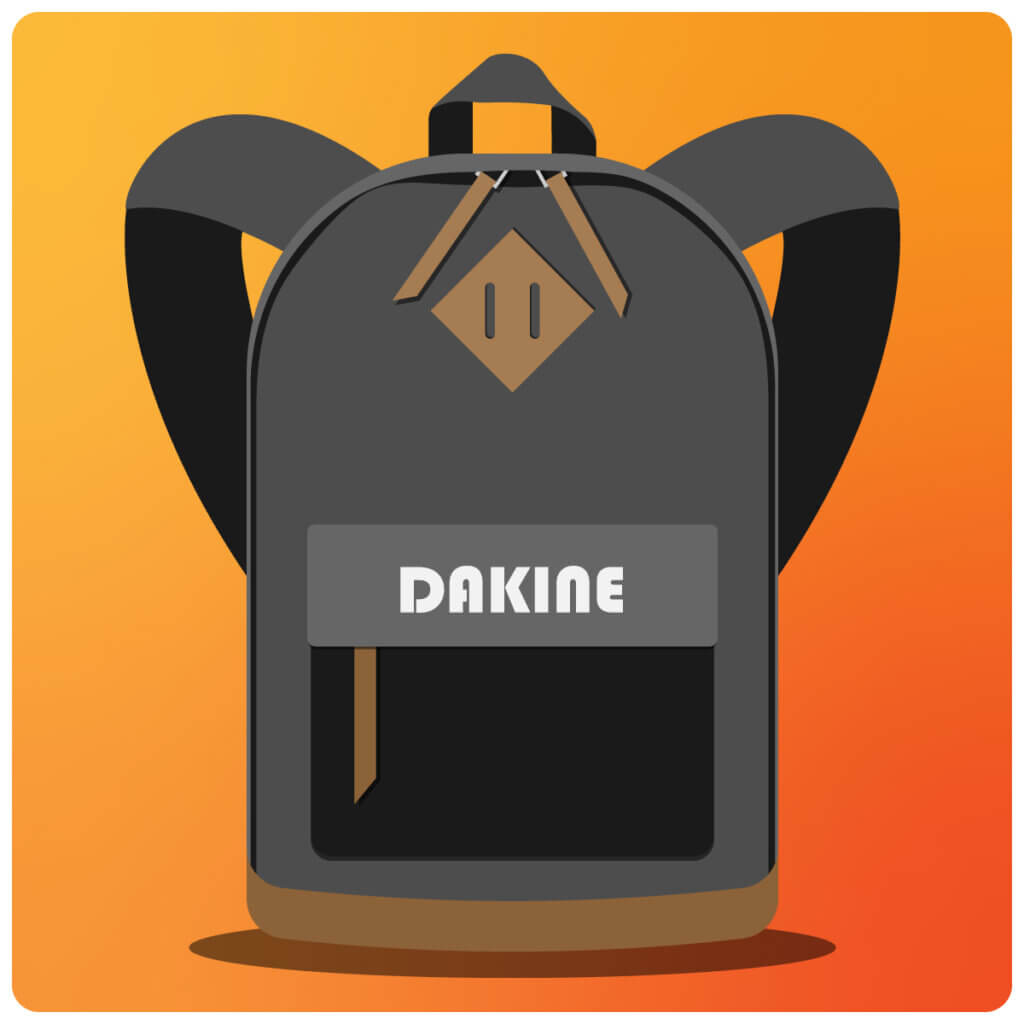
The company Dakine was founded in 1979 by the enthusiastic surfer Rob Kaplan in Hawaii and focused on surfing equipment in the beginning. Little by little, Dakine expanded its range and today offers sports equipment, fashion, bags and also backpacks. In addition to sports backpacks, for example for surfing, skating and skiing, Dakine mainly offers leisure backpacks in numerous colourful designs. In addition to looks and functionality, sustainability is also important to the manufacturer: Dakine has been doing without environmentally harmful PVC for years and has now even launched a PET line with backpacks that are made of 100 percent recycled plastic bottles. The prices for a Dakine backpack range from 20 to 250 euros.

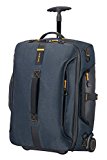
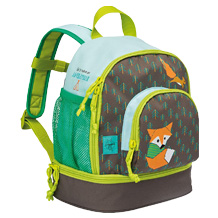
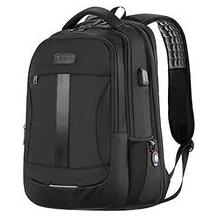
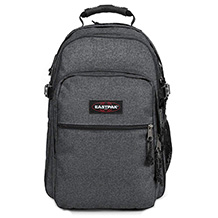


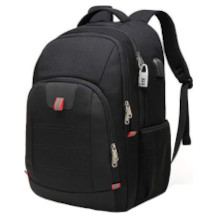
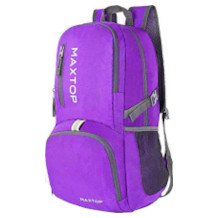

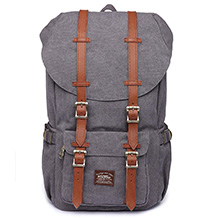
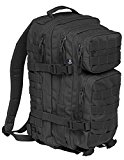
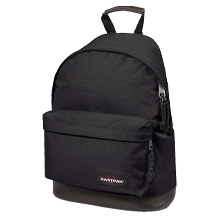
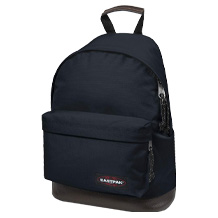
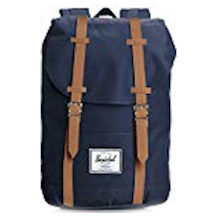
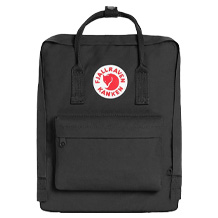
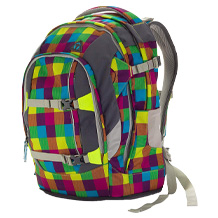
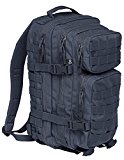
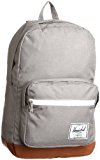

 7,370 reviews
7,370 reviews



